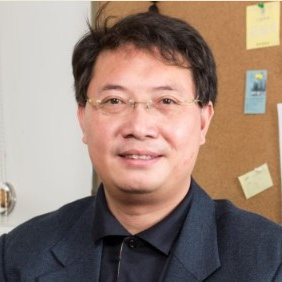Recent Advances in Emerging Low Power Circuits and Systems
A special issue of Journal of Low Power Electronics and Applications (ISSN 2079-9268).
Deadline for manuscript submissions: closed (31 December 2016) | Viewed by 19385
Special Issue Editors
Interests: AI; IoT; big data analytics; IC designs; WSN
Special Issues, Collections and Topics in MDPI journals
Interests: condition monitoring; VLSI signal processing; pattern classification; statistical process control
Special Issues, Collections and Topics in MDPI journals
Special Issue Information
Dear Colleagues,
This Special Issue on Emerging Low Power Circuits and Systems will focus on recent advances in design and breakthrough in CAS topics that can lead to emerging revolutionary impacts on our daily life, especially in low power consumer electronics, information and communication technologies and biomedical and health informatics technologies. With change comes opportunities, the market for these emerging electronic products and technologies is also expected to experience exponential growth in the coming decade.
This Special Issue shall highlight the potential and current developments of these low power CAS topics, along with the associated pressing challenges. We believe the proposed Special Issue is coherent and complementary to the areas of interest of semiconductor industry and electronic design automation consortiums.
Research and review papers on Emerging Low Power Circuits and System are solicited in areas including, but not limited to:
- Low Power Design, Simulation and Test of Digital, Analog, Mixed Mode and RF Circuits and Systems
- Low Power Processor Design and Embedded Systems
- VLSI, ASIC, FPGA, SoC and MPSoC
- Computer Aided Design and Electronic Design Automation for Low Power Design
- Circuits and Systems for Low Power Communications
- Nonlinear Circuits and Systems for Low Power Applications
- Control Theory Topics in Circuits and Systems
- Signal Processing
- Low Power Circuits and Systems for Biomedical Applications
- Energy Harvesting for Energy Constrained Applications
- Circuits and Systems for Cryptography
- Circuit/Device Modeling and Simulation
- Battery Management Systems
- Photovoltaic System Design
Dr. Ka Lok Man
Dr. M. L. Dennis Wong
Dr. Chao Lu
Guest Editors
Manuscript Submission Information
Manuscripts should be submitted online at www.mdpi.com by registering and logging in to this website. Once you are registered, click here to go to the submission form. Manuscripts can be submitted until the deadline. All submissions that pass pre-check are peer-reviewed. Accepted papers will be published continuously in the journal (as soon as accepted) and will be listed together on the special issue website. Research articles, review articles as well as short communications are invited. For planned papers, a title and short abstract (about 100 words) can be sent to the Editorial Office for announcement on this website.
Submitted manuscripts should not have been published previously, nor be under consideration for publication elsewhere (except conference proceedings papers). All manuscripts are thoroughly refereed through a single-blind peer-review process. A guide for authors and other relevant information for submission of manuscripts is available on the Instructions for Authors page. Journal of Low Power Electronics and Applications is an international peer-reviewed open access quarterly journal published by MDPI.
Please visit the Instructions for Authors page before submitting a manuscript. The Article Processing Charge (APC) for publication in this open access journal is 1800 CHF (Swiss Francs). Submitted papers should be well formatted and use good English. Authors may use MDPI's English editing service prior to publication or during author revisions.
Keywords
- Low Power Design, Simulation and Test of Digital, Analog, Mixed Mode and RF Circuits and Systems
- Low Power Processor Design and Embedded Systems
- VLSI, ASIC, FPGA, SoC and MPSoC
- Computer Aided Design and Electronic Design Automation for Low Power Design
- Circuits and Systems for Low Power Communications
- Nonlinear Circuits and Systems for Low Power Applications
- Control Theory Topics in Circuits and Systems
- Signal Processing
- Low Power Circuits and Systems for Biomedical Applications
- Energy Harvesting for Energy Constrained Applications
- Circuits and Systems for Cryptography
- Circuit/Device Modeling and Simulation
- Battery Management Systems
- Photovoltaic System Design






